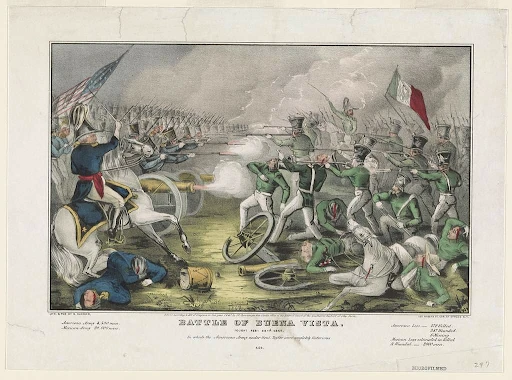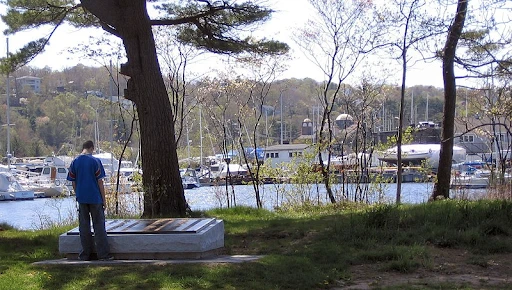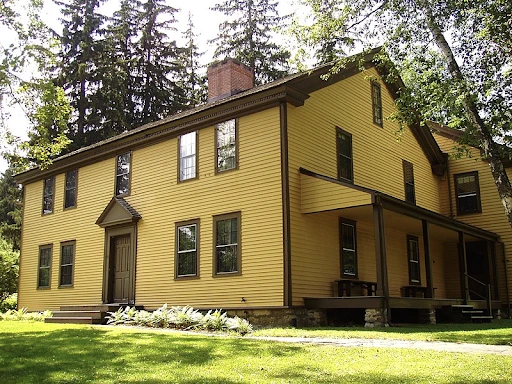Here at the Association for Diplomatic Studies & Training, we recognize the importance of documenting and distributing oral records of U.S. diplomats—this recording of the past becomes a centerpiece in shaping our perceptions of the profession today. But how often do we come across a Foreign Service Officer (FSO) who places an equal effort on remedying the negligence of history in diplomatic practice? John Dickson, an FSO from 1984 to 2010, is one such figure. From his experiences in Mexico and Canada, Dickson recognized the distinctive historical lens used by the United States’ neighbors.
Dickson first saw a contrast between how the United States and other countries perceived history as a public affairs officer for the State Department in Mexico City, Mexico. Dickson encountered a recurrent theme tracing back to the Mexican-American War of 1848 and other interventions such as the siege of Veracruz of 1914 and the Pershing Expedition of 1916–1917. This defensive attitude, based on the protection of Mexican national sovereignty, emerged a surprising number of times during contemporary relations with the United States. In fact, further based off his human resources position in Lima, Peru, Dickson noted that Latin American countries in general viewed their giant northern neighbor with a great deal of hesitancy—not an entirely unwarranted position given the long history of U.S. political and military interventions in the Caribbean, Central America, and South America. Later, as a Deputy Chief of Mission in Ottawa, Canada, Dickson witnessed a more cooperative retrospective of a U.S. neighbor’s past while attending a historical preservationist ceremony at a cemetery of American soldiers from the War of 1812 on Dead Man’s Island in Nova Scotia. Dickson found it remarkable how close the United States and Canada were in spite of being in an official state of war two centuries ago.
Believing the State Department should have better historical training for its employees, Dickson completed a Master’s Degree in Public/Applied History four years after his retirement and then published History Shock: When History Collides with Foreign Relations in 2016 to encourage diplomats to learn from incidents where countries’ different historical interpretations hindered beneficiary international relations. Mexico and Canada each occupy a chapter of how past U.S. military interventions continue to complicate their current relations with the United States. While Dickson most closely connects his inspiration for this book with his experiences in Canada and Mexico, he also features chapters on other locations he worked in as a public affairs officer, including Nigeria (1984–1988), South Africa (1988–1992), and Peru (1997–1999).
John Dickson’s interview was conducted by Mark Tauber on August 27, 2021.
Read John Dickson’s full oral history HERE.
Drafted by Michael Skora
ADST relies on the generous support of our members and readers like you. Please support our efforts to continue capturing, preserving, and sharing the experiences of America’s diplomats.
“I was just curious about this nexus between history, memory, and national identity”
The story and motivation behind History Shock:
Q: I do have one question about the book. You had mentioned throughout your oral history the need for more history teaching for Foreign Service officers going to these countries. What was the motivation for you to write the book? Did you speak to someone who encouraged you?
DICKSON: It struck me while serving in Mexico, pretty early on, that Mexicans had a very different recollection of history than I did. I should say I, but I would then venture to say probably most Americans have that very different view.

I noticed it almost on a daily basis. The Mexicans kept bringing up the War of 1848 and other interventions. In fact, Mexican foreign policy was very much rooted in the protection of national sovereignty. It was a defensive foreign policy. That really had a lot to do with it defending itself and its territorial integrity against the United States. So, to me, I was struck by how much that got in the way of the broader relationship. There are many other things that get in the way, but certainly, the history was there.
So, I was perplexed by this. They had such different memories than I did coming into Mexico. I read a lot, I traveled a lot, but I just didn’t have that kind of reference point on the history that they did and that they carried with them and that they had learned as part of their national identity growing up. It was definitely not part of our national identity growing up. They see it in their murals on the national palace, in murals in the national art museum. This is how, absent books, many people learn history in Mexico . . . .
. . . . I remember that in Mexico, I worked with the American Chamber of Commerce, which cleaned up a statue of FDR (Franklin Delano Roosevelt) that was very prominent in Polanco on the edge of Chapultepec Park. I didn’t know it was there. They had statues of Lincoln and Gandhi and many international figures, but I was surprised that there was this bust of FDR that was kind of overgrown with hedges and stuff. So, the AmCham paid for it, and then we got the current president of Mexico, Andrés Manuel López Obrador, AMLO, to come to the relaunch of this bust. He was then mayor of Mexico City and was very happy to do it; it was easy to get his approval, even though he was kind of a far left—from our perspective—in a country where the national administration was run by conservatives. He accepted right away, with no qualms. I was struck, first, that he gave a little talk at the bust, and he knew all about FDR. One of the reasons, and why I shouldn’t have been so surprised that he accepted, is that he really liked the progressive policies of the New Deal and FDR really reaching out to people in distress. So, this appealed to him, and that’s why it was a no-brainer for him. Anyway, it was again, yet another example where I was struck that even their understanding of American history was much deeper than I thought.
“We forget how we were bitter enemies at the time.”
Canadian and graduate school inspirations:

In Canada, we did a project connected to history. The consul general in Halifax worked with a group that had identified a cemetery of American soldiers from the War of 1812. It was Dead Man’s Island. A group of Canadians were going to put up condos on the site, and this group of American veterans, with some historic preservationists from Canada, decided to make an appeal to block that condo.
The Americans, a group from Ohio, paid for a marker. There was a big opening ceremony that I went to. The lieutenant governor general, who was the provincial representative of the Queen of England—Canada is part of the Commonwealth—was there, and they had all kinds of speeches and so forth. Here, again, was history in the present. What struck me there was how Canada is among our closest partners, and at the time, it was ruled by England, but how close we are after having just fought two centuries or less earlier. We forget how we were bitter enemies at the time.
So, anyway, when I left and retired from the Foreign Service, I had this troubling aspect of history in my mind, and I had an intention to apply for a graduate program in history. I really wanted to investigate this. I retired to the state of Massachusetts. They have a wonderful public university, the University of Massachusetts, Amherst. I took the GREs (Graduate Record Examinations) and did just well enough for them to accept me into the program. I started there, commuting from Pittsfield, where I live, all the way to Amherst. It’s an hour and a half commute, just slightly longer than my commute in Washington, D.C. to the State Department, and that’s eight miles versus 50 miles of traffic.
When I went there, I couldn’t articulate it, but I was just curious about this nexus between history, memory, and national identity. I got involved in a number of side projects, because I was just distracted enough, and everything seemed interesting. I was involved in local history projects here. I had to do an internship. I went to the local history society that’s based at the Herman Melville House and started giving tours on Melville. I got into historic preservation and wrote my thesis on historic preservation. But in the meantime, I still had this other, lingering interest. It kind of gelled in a number of different classes of global history, and also public history, and another one on the history of the United States as an empire. Finally, there was one on historic writing.
“Why didn’t I get more training?”
Recommendations other than better historical training to improve U.S. diplomacy:
Q: So, you have talked about the need for better history training in the Department to make U.S. diplomats more effective. Are there other recommendations you would make to improve the way the State Department does business?
DICKSON: Well, one of the things in relation to that is, I reflect on why did I rush through this career? Why didn’t I get more training?

I think this is a reflection on the career as a whole, Mark. I had just an incredible career. I didn’t go to a lot of places. I only went to five countries. I had colleagues of mine who had served in eight or nine. But I really think that it was just marvelous. It was marvelous for my family. I would recommend the career to anybody. I liked it because of the variety. I can’t imagine having gone to work with an organization and having stayed with that organization 26 years without that kind of variety. So, being able to move every three or four years is really a built-in variety that helped me each time get inspired and ready to go and reinvigorated. So, I liked that part of it. They were very good to my family, all of that.
TABLE OF CONTENTS HIGHLIGHTS
Education
AB in U.S. History, Princeton University 1972–1976
M.Ed. in Education Administration 1981–1984
M.A. in Public/Applied History 2012–2014
Joined the Foreign Service 1984
Mexico City, Mexico—Public Affairs Officer, 1999–2002
Mexico City, Mexico—Deputy Chief of Mission, 2002–2004
Ottawa, Canada—Deputy Chief of Mission, 2004–2007
Washington, DC—Director of the Office of Mexican Affairs, 2007–2008
